With the recent public attention on police brutality more and more departments are equipping their officers with body cameras. It’s a smart move since nothing dispels the protestations of a bereaved parent that their “perfect little angel” wasn’t actually actively shooting at police officers and dealing drugs like cold hard video proof. The folks at Taser have taken a stab at this market before with the Axon Flex, but their latest offering — The Axon Body 2 — seeks to provide an all-in-one solution that is ready to go out of the box and simple as easy as ordering Chinese takeout . . .
Those familiar with the Axon Flex and other similar body camera systems will understand the basics of how this works. The officer (or whomever) straps the camera onto their gear in the morning and turns it on. The camera then starts buffering the last two minutes of footage and alerts the office when everything is ready. During the day, if something happens that merits recording, the officer taps the large button in the center of the device. The camera immediately saves the previous two minutes of footage (from the buffer) and starts recording everything that follows until the officer turns the camera off again.
In the box, you don’t get much. There’s the camera itself, a charging cable, and clothing mount (which we’ll talk about in a second). A quick start guide is included as well, but the guide was for a previous generation device and none of the information was helpful in getting this specific model to work. Not off to a good start there.
Notably missing from the box is any form of software to download the videos off the device. The Axon series of cameras were designed with police officers in mind, meaning that they assume an individual officer is going to get the box and use the camera. In other words, someone who generally shouldn’t be able to alter the video in order to maintain its integrity. The software proper is available only to police departments and only after contacting Taser directly.
Taser provides an app-based system to view the video from the device that’s accessible by the officer on their mobile phone. The officer can pair the device to their phone to view and stream the video to Taser’s cloud storage system, but there’s no mechanism to download any of the videos and no way to alter them. The system uses the phone’s WiFi to connect to the camera, so if you rely on WiFi for connectivity, you can either connect your camera or be on the internet but not both at the same time.
With the Axon Body 2, the concept is that the camera can be attached directly to whatever outer garment the officer has on that day. The star shaped mounting plate (above left) is comprised of two halves, a front and back, with very strong magnets to keep them together. The officer sandwiches their outer garment between these two halves and then mounts the camera to the outer half.
I like the idea. It makes mounting cameras a snap even when the officer’s uniform doesn’t have any MOLLE attachment points or built-in loops for this purpose. It also makes it easy to mount the camera on standard polo shirts or plain t-shirts, something that can be useful for bicycle patrols and other special units.
Once mounted, the camera generally stays put. Rubber pads on the mount keep it from sliding around on the clothing, and the magnets are strong enough to hold the camera under moderate physical activity. That said, it’s still just a magnet. The camera can be easily ripped off the shirt if it gets caught on a fence while climbing or on a seatbelt when getting out of a car. The attachment method is good enough, but not ideal.
What isn’t really good enough: the angle you get.
I liked the idea of attaching a camera to the officer’s safety glasses, as Taser did with their last generation gear. That made sense. This setup, though, is less than ideal. It gives a relatively good view of what’s going on when the officer has their arms as their sides, but as soon as you start doing anything with your hands the field of view gets obscured.
You’ll get a great view of the clipboard while writing a ticket, but you’ll completely miss the suspect rooting around in his car for a weapon. And if you want to be able to see what your officers are shooting at, forget about it. The weapon completely obscures the field of view.
Still, for police officers, the Taser Axon Body 2 is a pretty good solution. It provides a quick and easy way to issue body cameras to officers, maintains the integrity of the data until retrieved by the department officials, and can be deployed without a ton of overhead.
Since this is a consumer blog first and foremost, we do need to cover civilian usage, too. And for those looking for a good option for a personal body cam, this probably isn’t it. The thing is massive and very obtrusive, not something you can covertly wear around in public without people thinking that you’re a cyborg. Better than a GoPro, but not by enough to matter.
It also might not be possible to actually download the content from your device to your computer given how closely Taser controls the distribution of that software.
On the competition side of the house, just forget it.
In short, what we have is a great solution for a cost effective and simple body camera for the law enforcement market that should be completely and totally ignored by the civilian market.
Specifications (Taser Axon Body 2):
MSRP: $399
Ratings (out of five stars):
Quality * * * *
The unit is well constructed and durable, but the fact that they shipped it with the wrong instruction manual leaves me a little underwhelmed.
Function * * *
For a police officer, this should be fine. The unit is easy to use and relatively simple to view the video afterwards (but not download). My main issue is the obstructed view when attached to a shirt. Oh, and the fact that it relies on the officer to turn it on. For the average civilian this thing is nearly useless.
Overall * * *
Functionally, it works. The issue is that with the intended location of the device on the officer’s body will probably limit field of view and ultimate usefulness. I honestly preferred the camera solution from Taser’s other Axon offerings, where a small remote camera feeds video to a larger battery and storage device.


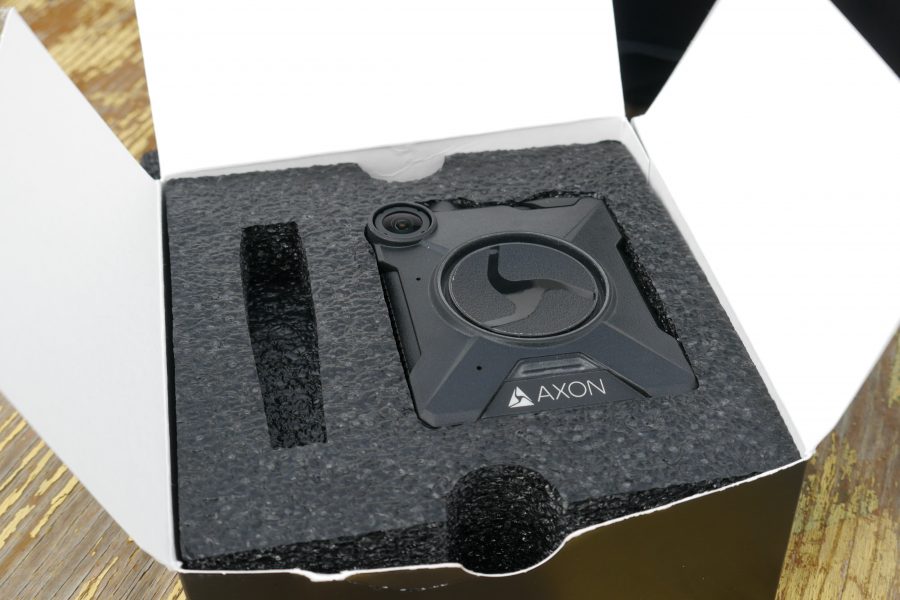
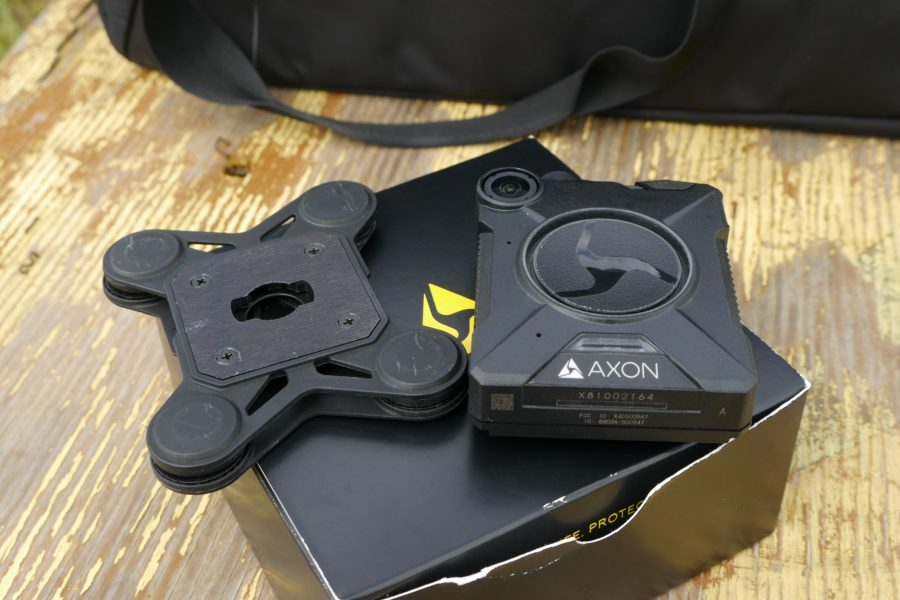
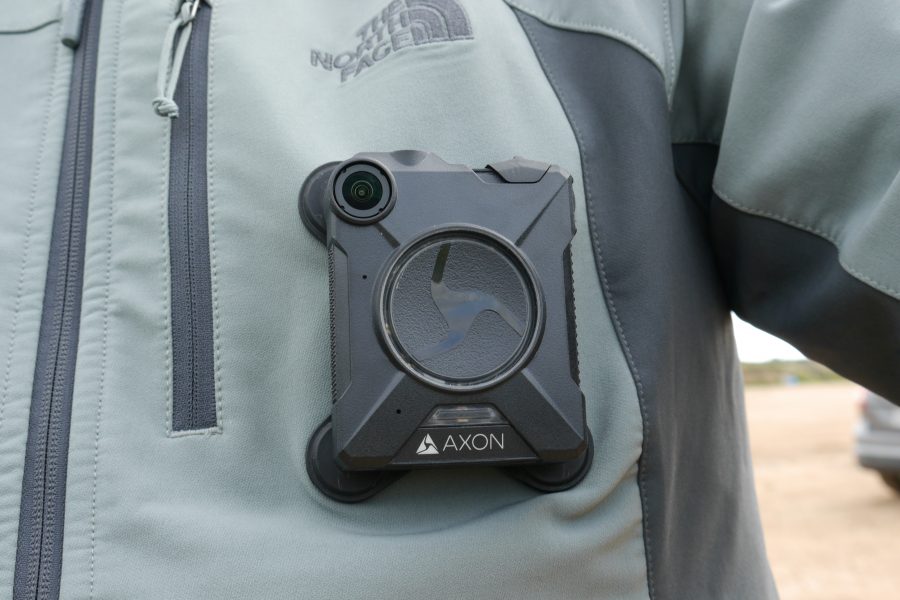
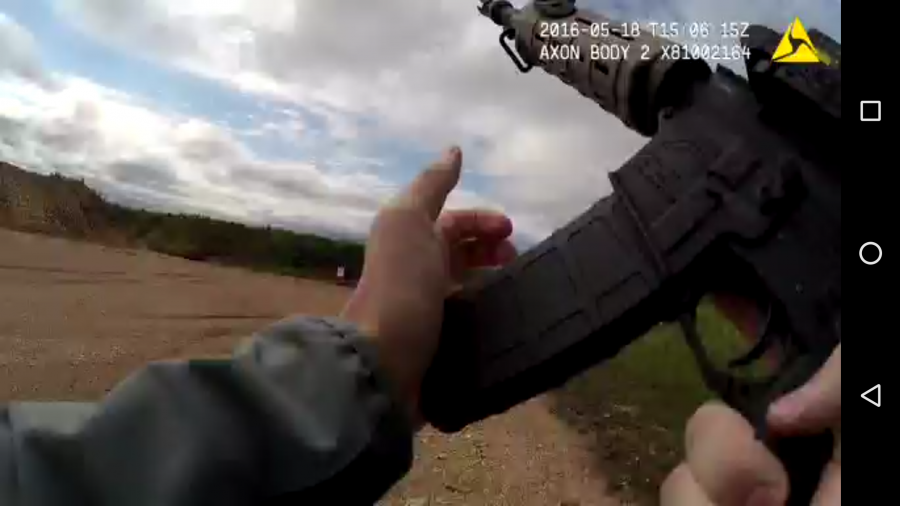
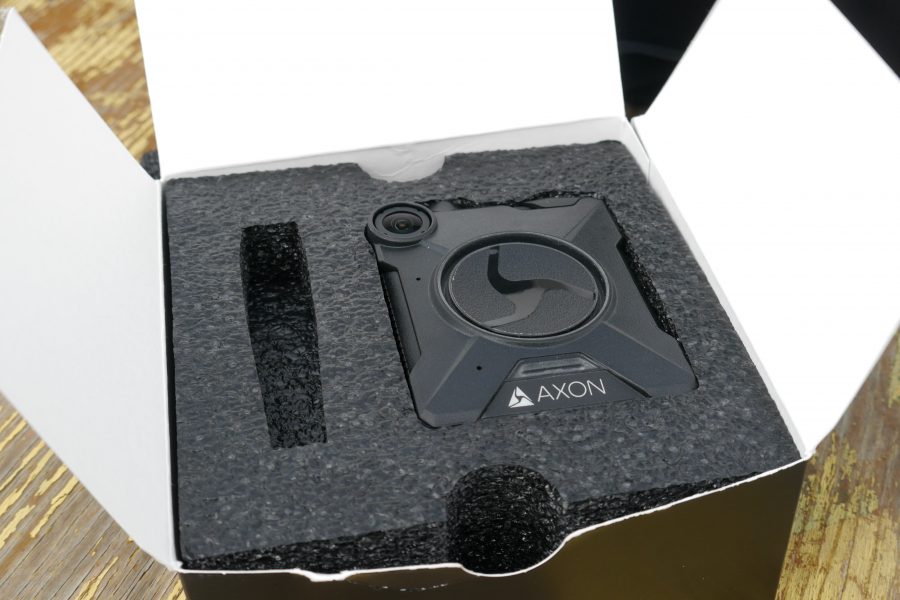



What is this thing? The format is HUGE! Officer selection of recording? Only good for saving the cop’s bacon, not John Q Public’s. FOV? WTF?
I thought their first one was a freshman effort, this? This is even worse. Is there someone who actually signed-off on this trainwreck of a product?
Yeah, I love these cams that they can turn off… What’s the point? Oh, I’m going to go violate someone’s rights, better turn off the camera.
It would be funny if it wasn’t true. Already have recordings of LEOs telling their pals ‘turn off your camera’.
https://www.youtube.com/watch?v=KV3v14dOAMw
http://www.wptz.com/news/police-shut-off-body-cameras-before-shooting-colchester-man/36232282
Etc., etc.
Cop cams are a great idea. They will encourage officers to be on the up and up, and they will protect officers and departments from false claims.
The cams that are available now are just okay. As the technology improves, they should perform far better.
I remember reading about a pilot study that showed police body cams reduced public complaints by a large margin (in an area where complaints about police behavior was high). I think they’re a great idea but it sounds like this product is a dud.
The product itself is a dud. Sadly, it’s a popular dud because it’s the easy and safe choice.
“The product itself is a dud. Sadly, it’s a popular dud because it’s the easy and safe choice.”
16V, if the recorder starts at the beginning of the shift and runs until the end of shift (except lunch) it would be good.
The problem is, there will be all kinds of mysterious ‘failures’, some of which will coincide with reports of officer misconduct.
The companies that manufacture the most reliable recorders should get the bulk of the orders for them.
Geoff, That’s been the problem with dashcams since day one. Every crooked copper with 2 IQ points to rub together has known how to use a big magnet (or bulk tape eraser) to render the tape ‘unreadable’, or they just unplug the dashcam for a ‘technical malfunction’.
I am all in favor of cops getting a fair shake. Which we agree means the vid rolls from beginning to end of shift. All day, every day.
Potential to improve the conduct of citizens and officers, or a combination of the two.
As long as they are used properly and cannot be turned off for ‘selective’ recording.
Officer selection of recording is a fail imo. Digital storage is so cheap and plentiful these days they ought to run the camera their whole shift. An128gb sd card can take what like 10-30hrs of hd video depending on quality.
Multiple cameras, recording from different angles. And release all videos to the public immediately. The videos are used to attack our rights whether they show police brutality or not, so we should be allowed to scrutinize them in their totality. No more withholding evidence from the public.
Not that simple… You’re not just talking about 15 hours of video. For a smallish 50-person agency, you’re talking 120 hours+ of video a day, 365 days a year. How long do you keep it for? A year? That’s not all that long, plenty of court cases regularly drag on longer than that, and that’s already almost 158 terabytes of video that will only grow exponentially.
Perhaps most importantly, how do you organize and archive the data, and procedurally, how do you control access to it?
All good questions.
Sounds like employment opportunities for lots of LE IT people…
A few hundred terabytes? Are you kidding? Chump change per year. Barely even a separate line item on the budget.
https://azure.microsoft.com/en-us/pricing/details/storage/
Storing it across several purveyors (to guarantee integrity) is only a few times chump change. We’re literally talking maybe ten grand a year for storage. Of thousands of terabytes. A fraction of a minimum wage records officer.
They will need a flunkie to log ’em in and out.
A $10 hour temp can do that…
Im sure there’s plenty of space in that hige data center that the gov is building in utah.
https://en.wikipedia.org/wiki/Utah_Data_Center
Some where around 3 and 1w exabytes. Considering that is orders of magnitude larger than the content of the internet (petabyte) i dont think storage is a problem in the short term.
Well, a complaint or court case within a year might be a clue to keep any relevant video longer than that, which would hopefully only apply to a very small percentage of recordings. So, kind of a non-problem on the “which videos do we keep” score…
How about including some relatively simple circuitry to save the buffer and start recording automatically? Say when a gunshot is heard (just a flag on the microphone volume), sudden acceleration or impact is detected (car crash, getting punched) or when rapid repetitive motion is sensed (running after a suspect)? These are all capable with either what’s on board already or a simple hardware addition, and there are algorithms for all of these things already.
If you shop body cams at all, you’ll see there are about bajillion players in the space, most with far better products – smaller, lighter, better looking, less likely to be tampered with, all of it.
The only reason this lump sells at all is Taser has two things going for it – its salesforce, and name recognition. They offer a solution set that’s drag-n-drop ready to go. If you’re the decision-maker on the body-cams, this bulky mess is your safe choice. And it’s the one many have taken – sadly.
Nobody ever got fired for buying IBM, translated to the 21st century.
That was true up until the 80’s.
What IBM had back then was reliability in storage media, now, *everybody* has access to the same reliable error resilient ‘RAID’ multi-disc arrays.
I love how your opener doesn’t make one mention that some times cops do act in the wrong; they are humans. Sometimes, an officer shoots someone who shouldn’t have been shot. Not every case is a criminal whose mother can’t accept their babies’ behavior.
BOTH instances occur, and the mention of both sides would give credibility to your writing and not allow one to write it off as easily as (most likely sponsered) propoganda. (Note: I am not accusing this particular piece of being sponsered by taser)
You are just as guilty of bias and denial as the “liberals” or “progressives” or whatever other boogeyman you are too busy hating to realize your hypocrisy when you criticize them for their behavior.
Yawn.
Its a product review, not a philosophy piece on the dynamics of government force.
But you keep carrying that chip on your shoulder – it looks great, don’t let anyone tell you otherwise.
Philosophy is involved in everything. And the intro paragraph clearly incorporated some of the author’s political and philosophical views.
A suggestion to improve someone’s writing is hardly a chip on the shoulder. But thanks for the compliment 😉
Your comment on the other hand was unnecessarily aggressive, something most stupid people become when anyone challenges their ideas.
Oh look, another hypocrit!
@IAmSeaMann,
I have NO problem with cops exonerating themselves with video of a ‘good shoot’. Not at all. I do so wish Officer Wilson had such video evidence, not that it would have stopped the animals from their “shopping spree”.
I don’t think any of the reasonable folks who (generally0 populate this site wants a cop wrongly prosecuted. What we want is transparency. Good or bad, let the chips fall as they may.
2 minutes sounds way too small. My dash cam, with a 64Gb SD card in it, can buffer more than an hour of 1080p video.
I’m not surprised, you being Russian, having a dash-cam.
Seems most RU drivers have ’em, and with good reason, keeps folks there (more or less) honest.
And it was a boon to astronomy when the Chelyabinsk meteor hit in ’13…
From a user’s perspective I’m not interested in anything that requires glasses- even safety glasses- to work. Hopefully we’ll see more that are smaller and can be placed around lapel level.
can someone please tell me, what the green light means when flashing dot at the top
I own this camera as a civilian. I have to disagree with this review. It’s an amazing camera. I will list why.
“Specifications (Taser Axon Body 2):
MSRP: $399
This is now $700, which is quite steep unless you *really* want one
Ratings (out of five stars):
Quality * * * *
The unit is well constructed and durable, but the fact that they shipped it with the wrong instruction manual leaves me a little underwhelmed. The instruction manual can be found online for free. Not an issue.
Function * * *
For a police officer, this should be fine. The unit is easy to use and relatively simple to view the video afterward (but not download). My main issue is the obstructed view when attached to a shirt. Oh, and the fact that it relies on the officer to turn it on. For the average civilian this thing is nearly useless.
Yes, the software is controlled but you can find it. Once you have it, you are set.
Overall * * *
Functionally, it works. The issue is that with the intended location of the device on the officer’s body will probably limit field of view and ultimate usefulness. I honestly preferred the camera solution from Taser’s other Axon offerings, where a small remote camera feeds video to a larger battery and storage device.”
The FOV is quite wide (143 degrees), he is complaining about the location instead of just moving it somewhere else. You don’t HAVE to have it in one spot. You can mount it anywhere, especially since they have an action camera “Gopro” type mounting option. It records in 1080p for up to 10 hours, it has up to 1 minute and 30 sec of “Buffer” so if you miss something, you can still catch it. There are many different personalization options as well. It also has automatic audio tuning. You can also mute the audio if you do not want it.
Comments are closed.